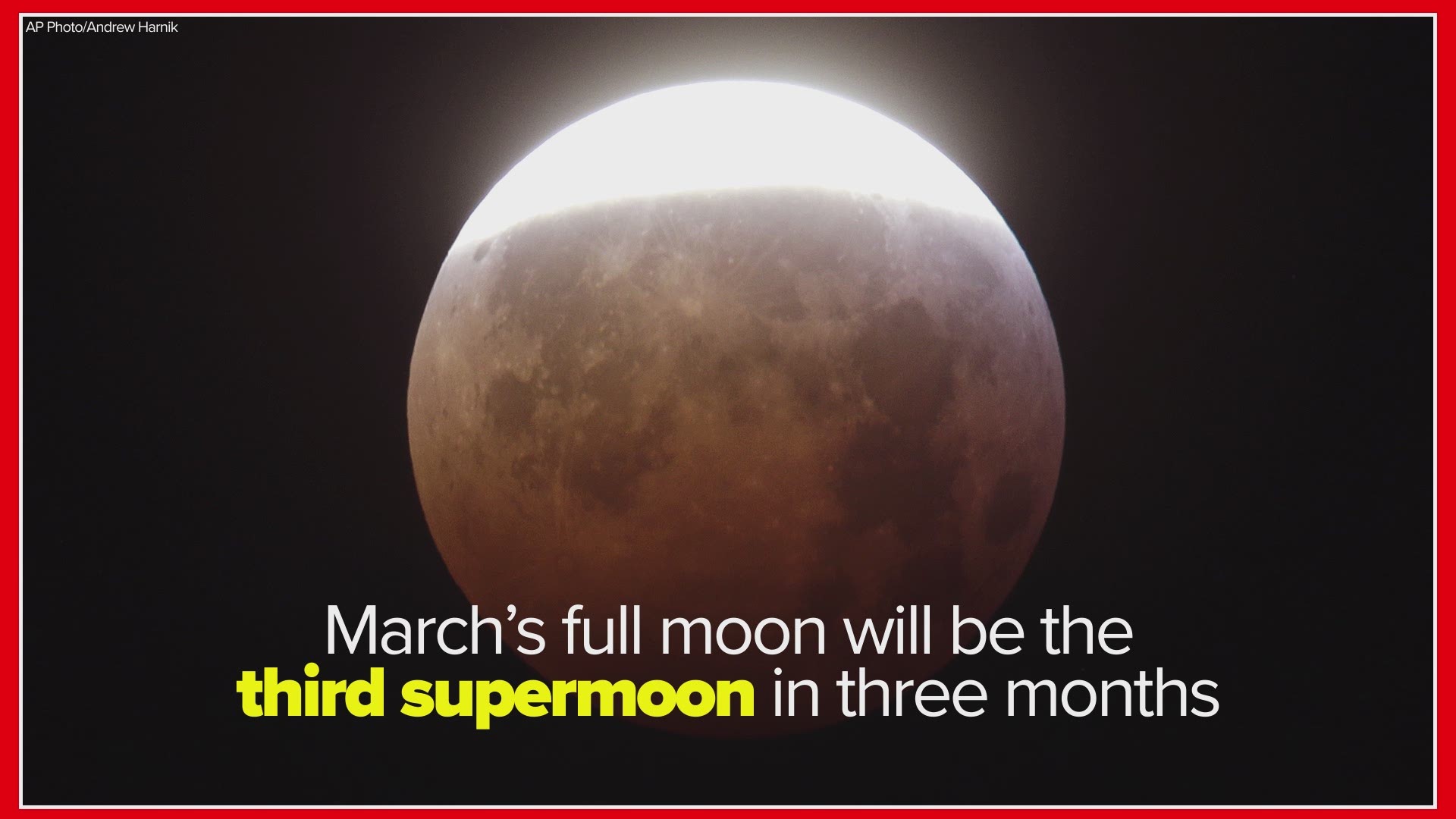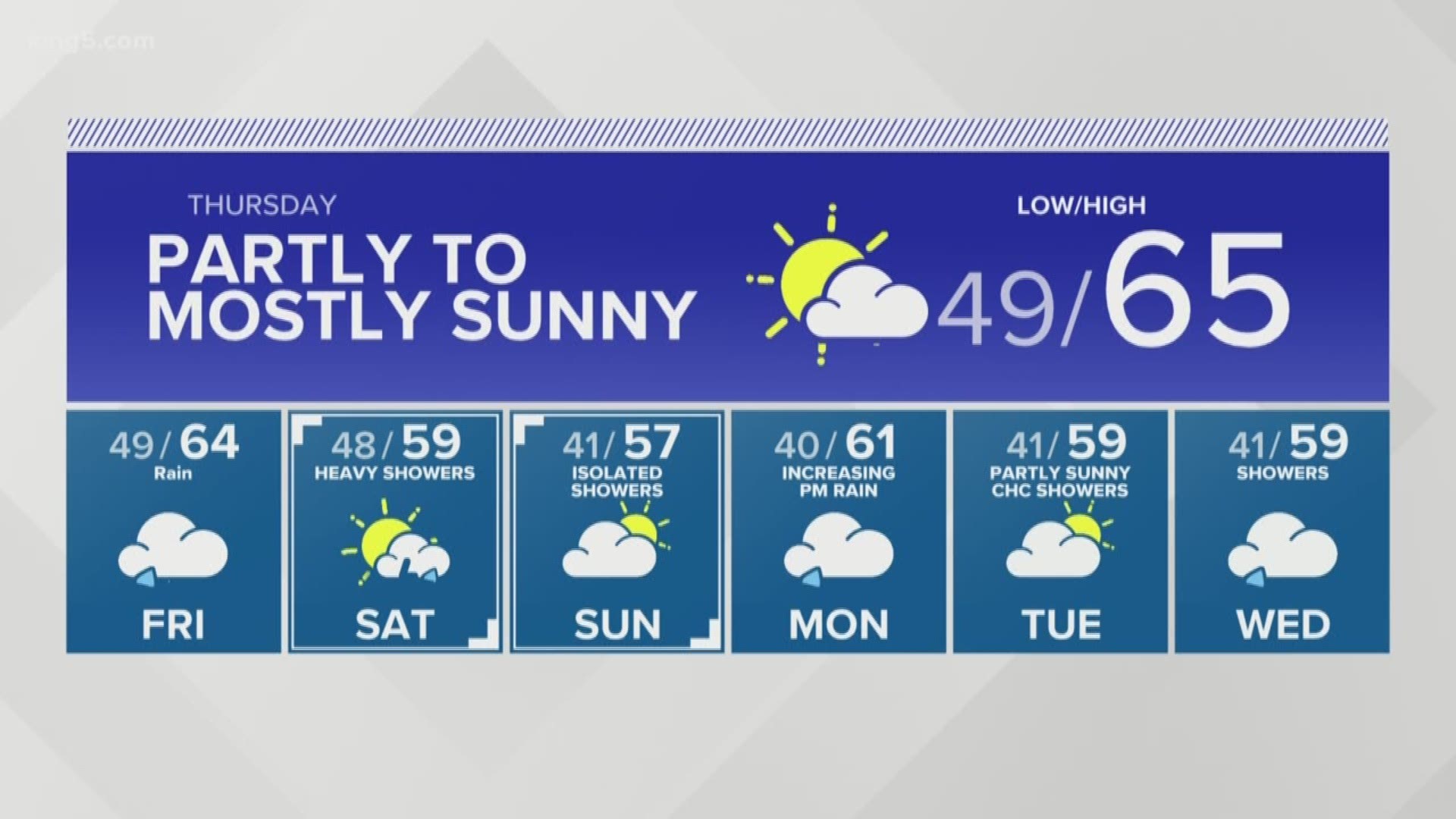Spring arrived in the Pacific Northwest at 2:58 p.m. Wednesday. The new season also coincided with another event: the final supermoon of 2019.
The moon reached fullness at 6:43 p.m. Seattle time, and will appear larger than normal due its proximity to Earth.
The last time spring aligned with a supermoon was back in 1981.
During an equinox, the sun is directly above the earth's equator, and both hemispheres of the earth get the same amount of daylight and nighttime for one day. There are two equinoxes every year: the vernal equinox in the spring and the autumnal equinox in the fall.
The full moon is a supermoon because the moon will be at nearly its closest to the Earth. The term was first coined in 1979 by an astrologer named Richard Noelle. He defined a supermoon as a "new or full moon which occurs with the moon coming within 90 percent of its closest approach to Earth." That point where the moon is at its closest is called a perigree.
During a supermoon, the full moon might seem a little bigger or brighter than normal. February's supermoon was the biggest, as it was the closest the moon would ever get to the Earth this year. There was also a supermoon in January. If you missed those two, make sure to catch this month's because it will be the last one until next year.
March's supermoon is also called the Worm Moon. According to the Farmer's Almanac, the tradition of naming full moons goes back to Native American traditions in North America. Tribes kept track of seasons by giving names to each full moon.
Native Americans called March's moon the Full Worm Moon because the ground usually begins to thaw at this time of year, and worm casts appear. It's also sometimes called the Full Sap Moon, because it marks the time of year when maple sap begins to flow.


